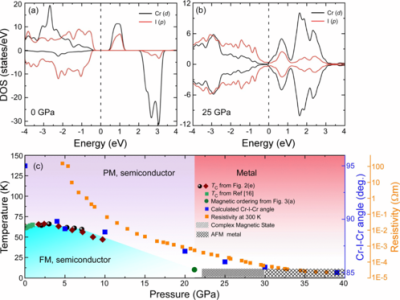
Through advanced experimental techniques on CrI3 single crystals, we derive a pressure-temperature phase diagram. We find that Tc increases to ∼66 K with pressure up to ∼3 GPa followed by a decrease to ∼10 K at 21.2 GPa. The experimental results are reproduced by theoretical calculations based on density functional theory where electron-electron interactions are treated by a static on-site Hubbard U on Cr 3d orbitals. The origin of the pressure-induced reduction of the ordering temperature is associated with a decrease in the calculated bond angle, from 95° at ambient pressure to ∼85° at 25 GPa. Above 22 GPa, experiment and theory jointly point to the idea that the ferromagnetically ordered state is destroyed, giving rise first to a complex, unknown magnetic configuration, and at sufficiently high pressures a pure antiferromagnetic configuration. This sequence of transitions in the magnetism is accompanied by a well-detected pressure-induced semiconductor-to-metal phase transition that is revealed by both high-pressure resistivity measurements and ab initio theory.




